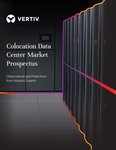There is no shortage of data available to help decide New Year’s Resolutions, as well as corporate goals, that are realistic but also suitably ambitious.
The disruption caused by the pandemic shifted a lot of people - and businesses - into a short-term, reactive mode.
2021 looks like it will also have its challenges, but there are also positive signs that it might be ok to pick up on longer term planning.
New Year's Resolutions
In January, for some, that planning process includes making New Year’s Resolutions: plans with a promise attached. It’s easy to dismiss resolutions as frippery, but there is a historical precedence for resolution setting. The habit apparently dates back to Babylonian times. During what was mainly a religious festival, citizens proclaimed their loyalty to the king but also promised to pay off debts and make good on other commitments.
The ancient Babylonians probably had their own ways of divining what the year ahead had in store, but it’s fair to say they didn’t have access to the information that we have now.
For example, if you want to get serious about losing weight in 2021, you need data. What’s your baseline? What’s your end goal? And how much is safe to lose per week? As the adage states: “you can’t manage what you can’t measure”.
But data isn’t just important for personal goal setting, it’s obviously also critical for corporate planning. Luckily, there is no shortage of analyst and market research companies to help.
What drives the data center industry in 2021?
Take the data center industry. Major analyst firms have released multiple reports into what 2021 may hold in terms of IT spending, disruptive technologies, M&A activity, and a range of other important areas.
Examples include:
- Overall IT spending:
Worldwide IT spending is projected to total $3.9 trillion in 2021, an increase of 6.2 percent from 2020, according to the latest forecast by Gartner. CIOs have a balancing act to perform in 2021 — saving cash and expanding IT, the analyst group states. - Data center capacity growth:
Property services company CBRE releases global reports that forecast growth in multi-tenant data centers. For example, in Europe, CBRE predicts an unprecedented ‘tsunami of supply,’ with 400 MW of new data center space supplied in 2021, and the same again in 2022. - Edge Computing:
Looking even further out, IDC expects worldwide spending on Edge computing to reach $250 Billion in 2024. Meanwhile, Forrester believes Edge growth could actually divert some IT budgets (and focus) away from the cloud, shaving five points off public cloud growth.
What do these derivers mean for the data center?
As well as consuming data and research, Vertiv also develops its own set of annual data center trends based on input from experts across the company.
For 2021, those trends are:
- Utility-like criticality:
On a basic level, data centers and digital infrastructure have become even more critical to the basic functioning of society and business. This will have implications for how the industry grows and is regulated in the future. - Digitalization on fast forward:
The lifestyle shifts brought about by the global pandemic essentially established a new baseline for digital infrastructure. Investment in the IT ecosystem – including data centers - has accelerated to enable more secure, reliable, and efficient remote work capabilities. - Bringing large data center capabilities to small spaces and the Edge:
2021 will see an increased focus on bringing hyperscale and enterprise-level capabilities to Edge sites. Edge infrastructures will become more robust and sophisticated, adding remote visibility across systems and increasing the options for remote IT management. - The 5G conversation turns to energy consumption and efficiency:
As many countries start their 5G network rollouts in 2021, the conversation is expected to shift to 5G energy consumption and methods for improving energy efficiency. - Sustainability comes to the forefront: 2021 is likely to see an increased sustainable infrastructure innovation as the data center industry continues to wrestle with the fact that it accounts for approximately 1 percent of global energy consumption.
Vertiv also recently held a LinkedInLive event to discuss these trends in more depth. A panel of global executives gave their take on how the trends applied in their region, and what changes they may lead to.
At the end of the session, with data center trends as a backdrop, the panel discussed what the data center industry’s collective New Year’s resolutions should be. If you tune into the LinkedIn Live session you can find out exactly what those were.
It seems that at least some data center industry players are prepared to go one step further than dreaming up theoretical resolutions. Twenty-five companies and 17 associations agreed to a self-regulatory plan called the Climate Neutral Data Centre Pact to make data centres in Europe climate neutral by 2030.
However, as with any goal or resolution, setting them is the relatively easy part. It’s sticking to them that really counts.





